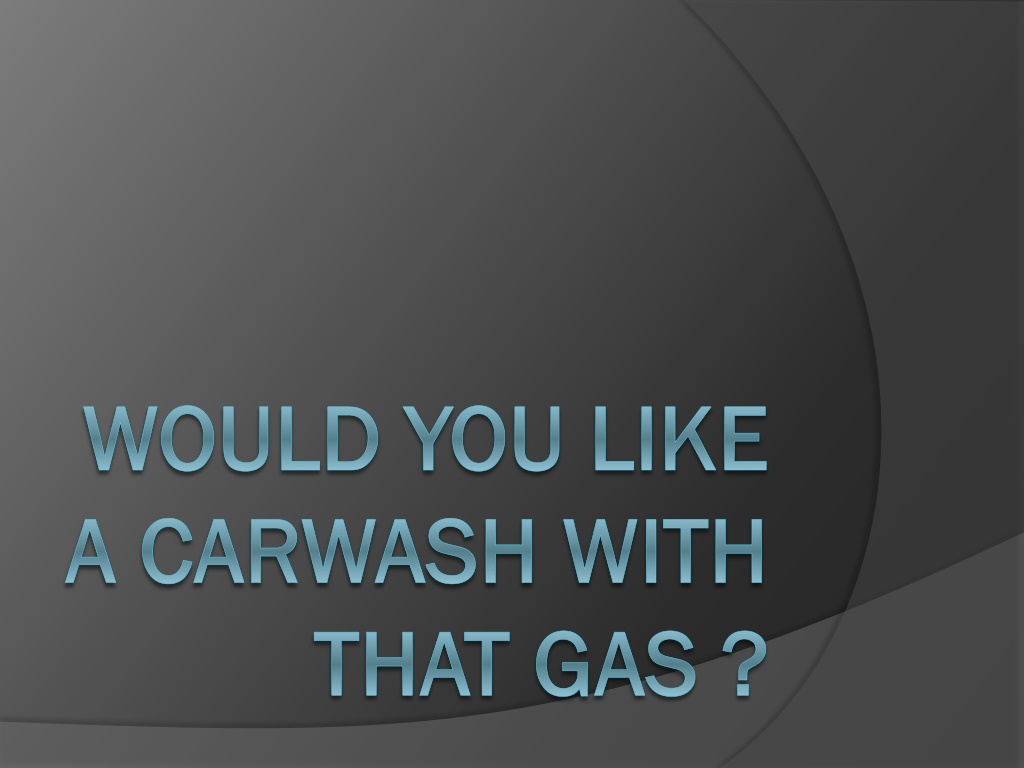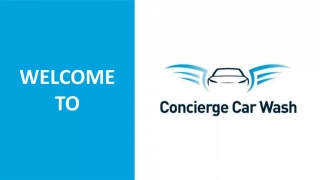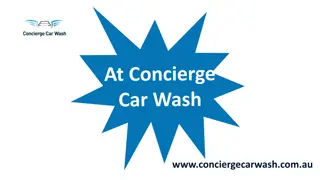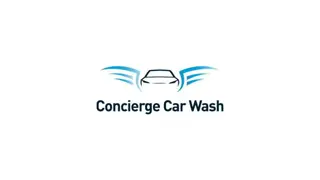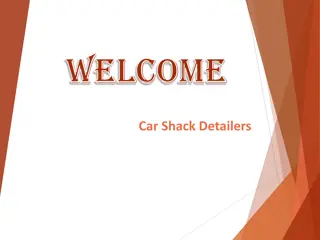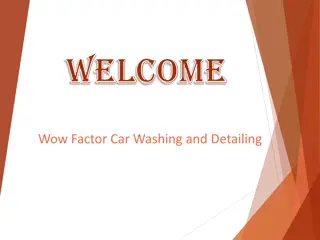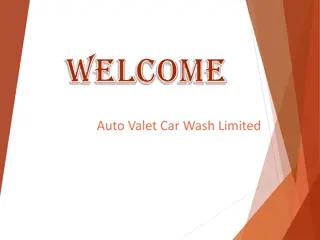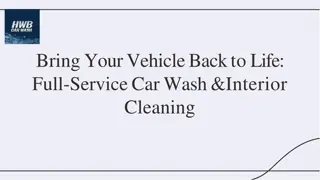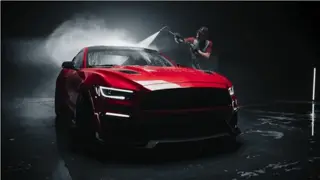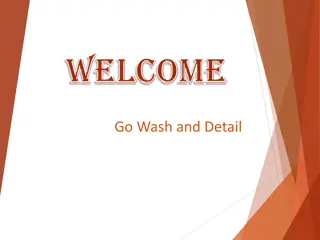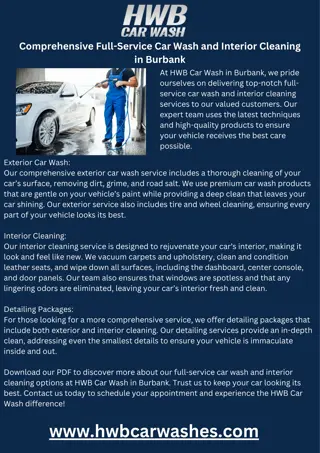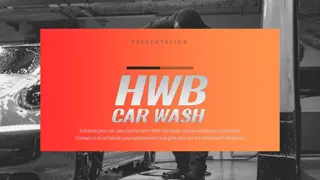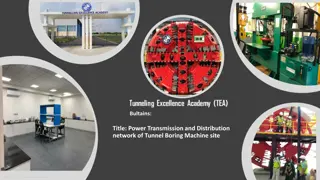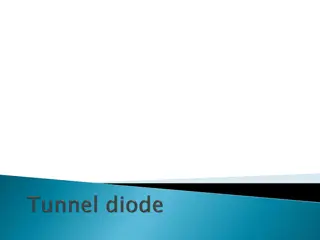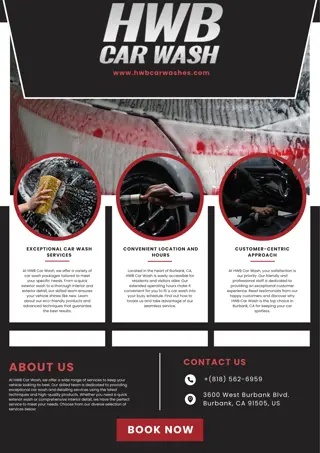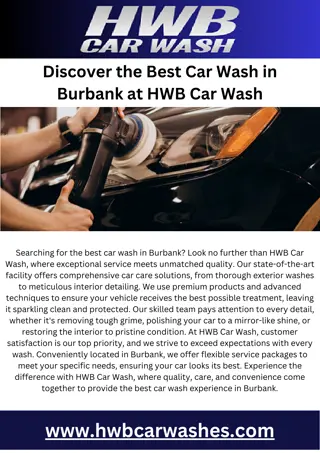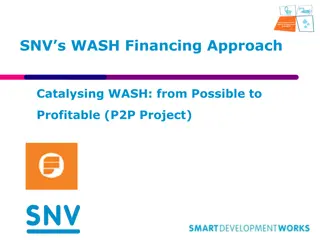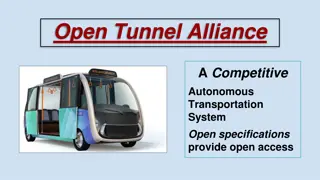Inside the World of Tunnel Automatic Car Wash Systems
Exploring the intricate workings of tunnel automatic car wash systems, from payment processing to the various cleaning stages involving specialized chemicals and technology. Discover the evolution and engineering marvels behind these automated car wash facilities.
Download Presentation

Please find below an Image/Link to download the presentation.
The content on the website is provided AS IS for your information and personal use only. It may not be sold, licensed, or shared on other websites without obtaining consent from the author.If you encounter any issues during the download, it is possible that the publisher has removed the file from their server.
You are allowed to download the files provided on this website for personal or commercial use, subject to the condition that they are used lawfully. All files are the property of their respective owners.
The content on the website is provided AS IS for your information and personal use only. It may not be sold, licensed, or shared on other websites without obtaining consent from the author.
E N D
Presentation Transcript
WOULD YOU LIKE WOULD YOU LIKE A CARWASH WITH A CARWASH WITH THAT GAS ? THAT GAS ?
Actually, automatics come in several flavors Hand car wash facilities Self-serve In-bay automatics And
We usually close our eyes while imagining how badly the car s getting beat up. So, what actually happens in a TUNNEL AUTOMATIC ? Surprisingly, these systems are marvels of chemistry and engineering.
This morning Id like to show you how a conveyorized tunnel automatic works. They first appeared in the late 1930 s You pass through 5 stages
Stage 1 Pay and Select Some car washes have their customers pay through a computerized point of sale unit. The mechanism inputs the wash Price Lookup Code into a master tunnel controller. After paying the car is put into a line-up called the stack or queue. The stack moves sequentially, so the wash knows what each car purchased.
Stage 2 The Entrance The car moves forward to engage the conveyor The system detects the length of the car The system keeps track of the wash options the customer has selected
Stage 3 -- WASH The carwash starts cleaning with pre- soaks, applied through special arches. They may apply a lower pH (mild acid) followed by a higher pH (mild alkali). Chemical formulas and concentrations will vary based upon seasonal dirt and film on vehicles, as well as exterior temperature. Chemical dilution and application work in combination with removal systems based on either high pressure water, friction, or a combination of both.
Stage 4 -- Rub a Dub Dub The customer next encounters tire and wheel nozzles. These will apply specialized formulations, which remove brake dust and build up from the surface of the wheels and tires. The next arch will often be wraparounds, usually made of a soft cloth, or closed cell foam material. These wraparounds should rub the front bumper, the sides, and then the rear of the vehicle. Past the first wraparounds may be a tire brush that will scrub the tires and wheels.
Stage 5 -- Rinse Some washes have multiple rinse stages, usually offering a protectant as an option. A tire shining machine might spray silicone tire dressing on the tires, making them look new and glossy. Next the vehicle is treated with a drying agent and a final rinse.
A "spot free" rinse water, filtered of the salts normally present, and sent through reverse osmosis membranes to produce highly purified water that will not leave spots.
The vehicle is finished with forced air drying, in some cases utilizing heat to produce a very dry car.
Not bad, for a few bucks Sit back and listen to a few tunes No harm to your car Removes the worst of dirt Extremely efficient use of water No watermarks left over
